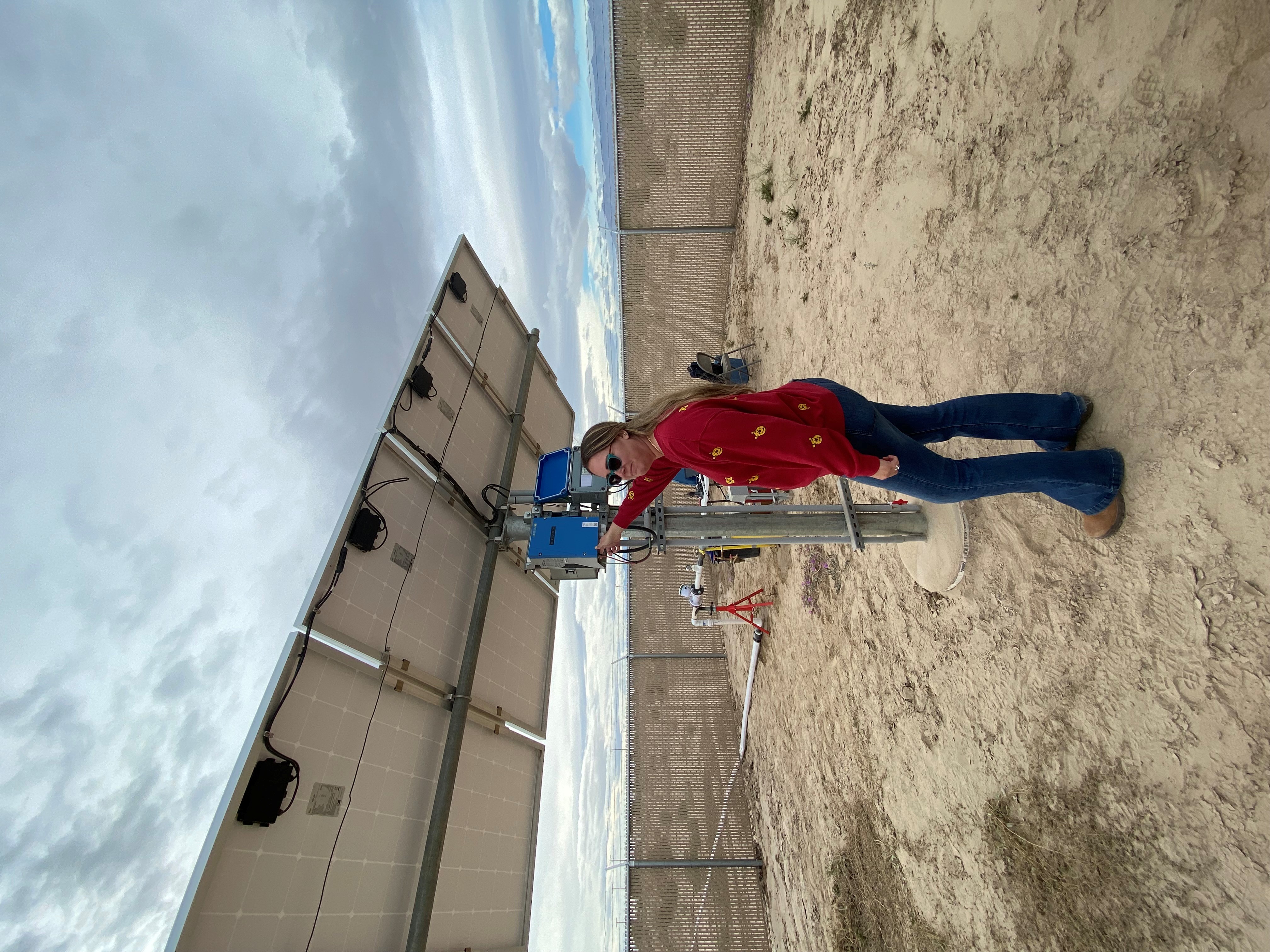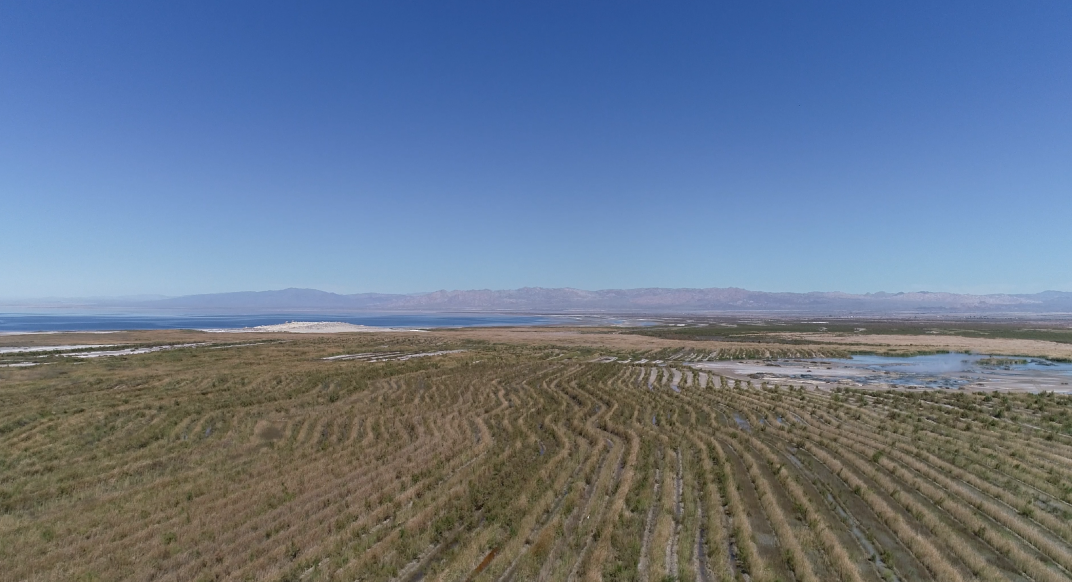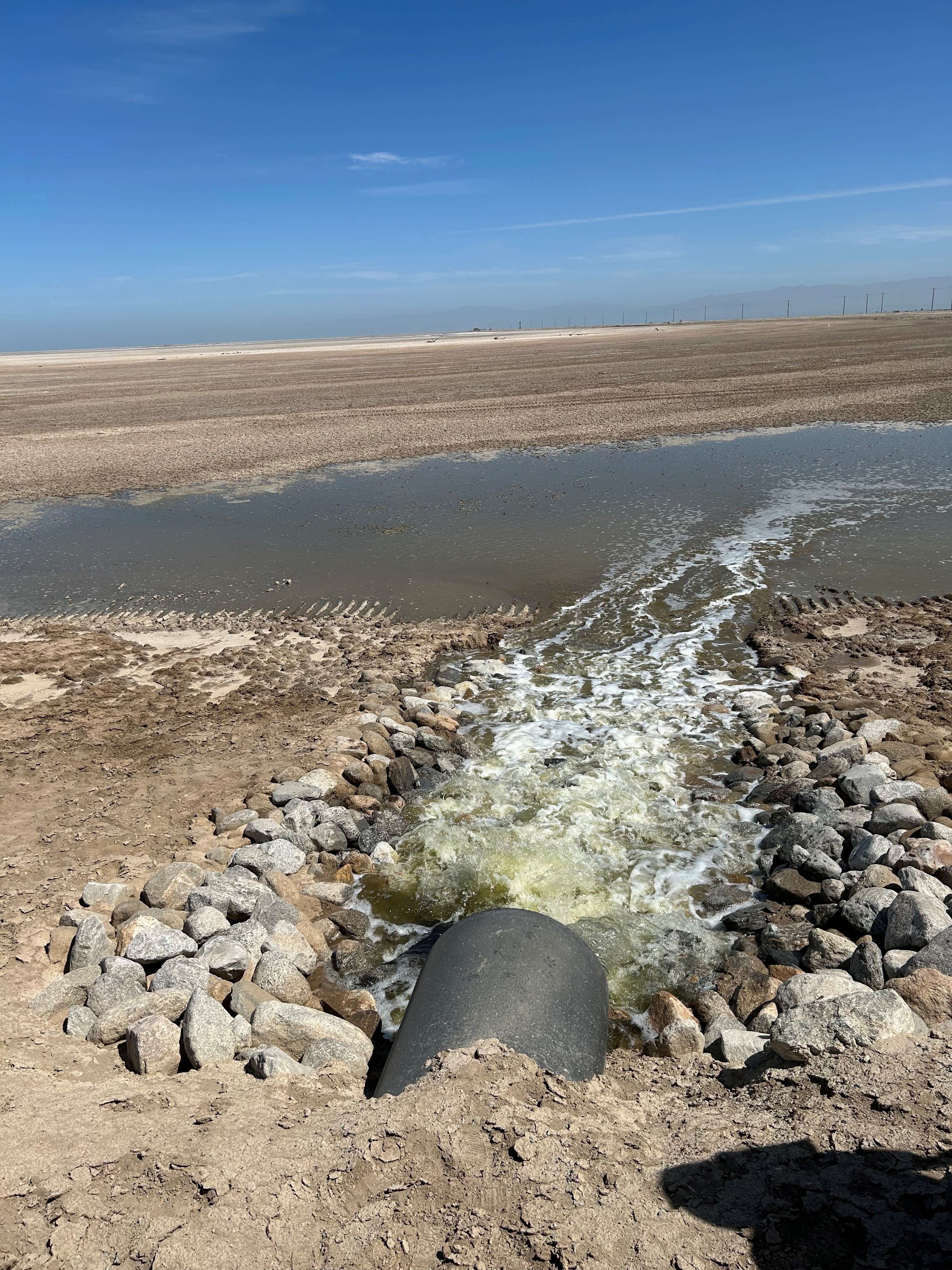
In Jessica Humes’ childhood, her parents once took her to visit the Salton Sea where she found a pumice rock that washed ashore. “The idea that rocks could float had me picking up rocks everywhere we went,” she said.
That day sparked an interest in the sciences that would lead her back to the Valley after university and into a career that would place her at the forefront of addressing environmental issues at the sea.
There are likely very few people who have spent as much time at the Salton Sea, as much time studying the sea’s environmental dynamics, and as much time working to prevent the spread of dust to surrounding communities as she has.
Humes is the environmental compliance supervisor for the Imperial Irrigation District, a role that has her overseeing critical environmental analysis and mitigation projects in and around the sea and throughout the Imperial Valley region.
Her primary goal—to protect the community.
“I grew up in the Imperial Valley. This place is home. This is where I am raising a family,” Humes said. “I am working on protecting the health of the community and the environment I live in.”

That is no easy task given the complexity of the issues she leads along with her team, starting with the Salton Sea, a 365-square mile inland lake formed (as it’s known today) in 1905 when flood waters from the Colorado River breached an irrigation canal, spilling the river into the Salton Sea Basin for two years before the issue could be resolved.
In California, there are few bodies of water with as much history and as many challenges as the Salton Sea.
During the 1950s, the sea was a haven for visitors, including Hollywood elite, who saw it as an oasis in the desert, but in the years that followed, the sea struggled with water quality issues as a terminus lake with no outlets.
A pivotal point in the sea’s history came in 2003 with the signing of the Quantification Settlement Agreement (QSA), designed to help California live within its apportionment of the Colorado River.
Water conservation, a key component of the QSA, impacts the amount of water flowing to the sea and over the years elevations have dropped, exposing playa—roughly 30,000 acres to date.
QSA-implementing legislation called upon the state to lead a restoration effort to address the sea’s long-term health.
Legislation also established the QSA Joint Powers Authority (JPA), made up of IID, the San Diego County Water Authority, the Coachella Valley Water District, and the state to carry out environmental mitigation to address the specific impacts of the QSA.

Humes leads that mitigation effort for IID, along with her team, by carrying out a number of critical programs, including an air quality mitigation program that to date has addressed 2,700 acres of exposed playa at the sea with thousands of additional acres in development.
“Twenty percent of the playa is responsible for 80 percent of the emissions,” Humes said. “If we can control that 20 percent, we can control most of the dust.”
Projects she has helped implement include surface roughening, vegetation enhancement, and more recently the development of groundwater wells, tapping into aquifers underneath the sea to help support vegetation.
In addition to air quality projects, Humes led the building of a 1,000-acre managed marsh on land adjacent to Highway 111 between Calipatria and Niland, and oversees programs to monitor and protect the Valley’s burrowing owl and desert pupfish populations.
It’s work that means a great deal to her as she serves her community.
Humes was raised in the city of Imperial and graduated from Imperial High School. Her interest in the sciences, sparked by that childhood visit to the sea, led her to pursue a degree in geological science from the University of California, Santa Barbara.

After earning her bachelor’s degree in 2008, her goal was to return to the Valley to work in the geothermal industry; instead, she accepted a position with IID as an environmental mitigation aid, working on the burrowing owl program.
Humes, who went on to earn a master’s degree in business with a focus on environmental management in 2013 from Ashford University, would eventually become IID’s lead biologist and then environmental program manager before taking on her newest role as environmental compliance supervisor.
IID Water Manager Tina Shields said the work of Humes and her team has made a difference in supporting the region.
“At the end of the day – there is no substitute for home-town professionals who choose to represent and advance their region to ensure long-term resiliency for our families, neighbors and friends,” Shields said. “Jessica and her team have been responsible for so much on the ground progress, from IID’s Salton Sea Air Quality Program to dust emission projects and the construction of IID’s beautiful managed marsh that all of Imperial Valley can enjoy.”
Shields added, “Her and her staff’s work is also critical to allowing other IID infrastructure projects to progress while maintaining the district’s environmental stewardship goals.”
During her years with IID, Humes worked alongside the late Bruce Wilcox, who first led IID’s environmental mitigation programs at the sea. He would go on to become the first assistant secretary of Salton Sea policy under the California Natural Resources Agency, leading what would become the Salton Sea Management Program (SSMP), the state’s phased approach to restoration.
“Everything I learned about environmental mitigation, I learned from him,” Humes said, adding that when Wilcox joined the state, it helped establish a strong bridge between the state and IID. “That bridge was just already there, and it helped build the relationship we have today.”
Humes said she and her team continue to foster a collaborative relationship with the state and IID’s QSA JPA partners to ensure the needs of the community are met.

State officials credited Humes for her efforts to share information and work together toward a common goal.
“I have worked with Jessica for over five years and her ability to facilitate the exchange of information and collaborate on project planning and implementation is invaluable to the Salton Sea Management Program,” said Melinda Dorin, lead manager for the state Department of Water Resources Salton Sea Restoration Office. “Working collaboratively to share data and identify project areas and methods saves time and resources for the SSMP.”
Dorin added, “Jessica’s easy-going style, knowledge about IID projects and commitments, the Salton Sea region, and her responsiveness have helped maintain the exchange of information and collaboration that is so important in implementing a successful program.”
Looking ahead, Humes said she remains focused as a representative of IID in developing projects that protect the health of the community.
“We are trying to be as proactive as we can in implementing programs before dust becomes an issue,” she said. “We are trying really hard to keep the Imperial Valley a healthy environment for us all to live in.”